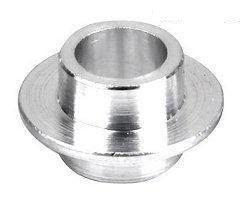Despite their importance, inline skate spacers are often misunderstood or overlooked.
In this section, we will address common questions and concerns about spacers and debunk myths and misconceptions surrounding their use and benefits.
Are spacers really necessary for inline skates?
Yes, spacers are essential components of inline skates that play a crucial role in maintaining proper bearing alignment, which in turn affects wheel performance, stability, and bearing lifespan.
Skipping spacers can result in increased friction, wobbling, and uneven wear on bearings and wheels, negatively impacting your skating experience.
Do all inline skates come with spacers?
Most inline skates come with spacers pre-installed, but the type and quality of spacers may vary depending on the skate model and price range.
It's essential to inspect your skates and ensure that they have the appropriate spacers for optimal performance.
Can I use spacers from another skate or wheel brand?
While it's possible to use spacers from a different brand, it's crucial to ensure that they are the correct size and compatible with your skate model and wheel hub dimensions.
Using incompatible spacers can lead to poor bearing alignment, reduced performance, and potential damage to your skates.
Misconception: Tightening axle bolts will compensate for the absence of spacers.
Tightening the axle bolts without spacers can put excessive pressure on the bearings, leading to increased friction, reduced wheel rotation, and potential bearing damage.
Spacers ensure proper bearing alignment without over-tightening the axle bolts, providing a more efficient and smoother ride.
Misconception: Spacers do not affect skate performance and are only necessary for beginners.
Spacers play a vital role in skate performance for skaters of all skill levels.
They help maintain proper bearing alignment, which contributes to better wheel performance, stability, and bearing longevity.
Both beginners and experienced skaters can benefit from using spacers in their inline skates.
By addressing common questions and misconceptions about inline skate spacers, we hope to clarify their importance and encourage skaters to recognize their benefits.
Ensuring that your inline skates have the appropriate spacers can greatly impact your skating experience, improving performance, stability, and bearing life.


